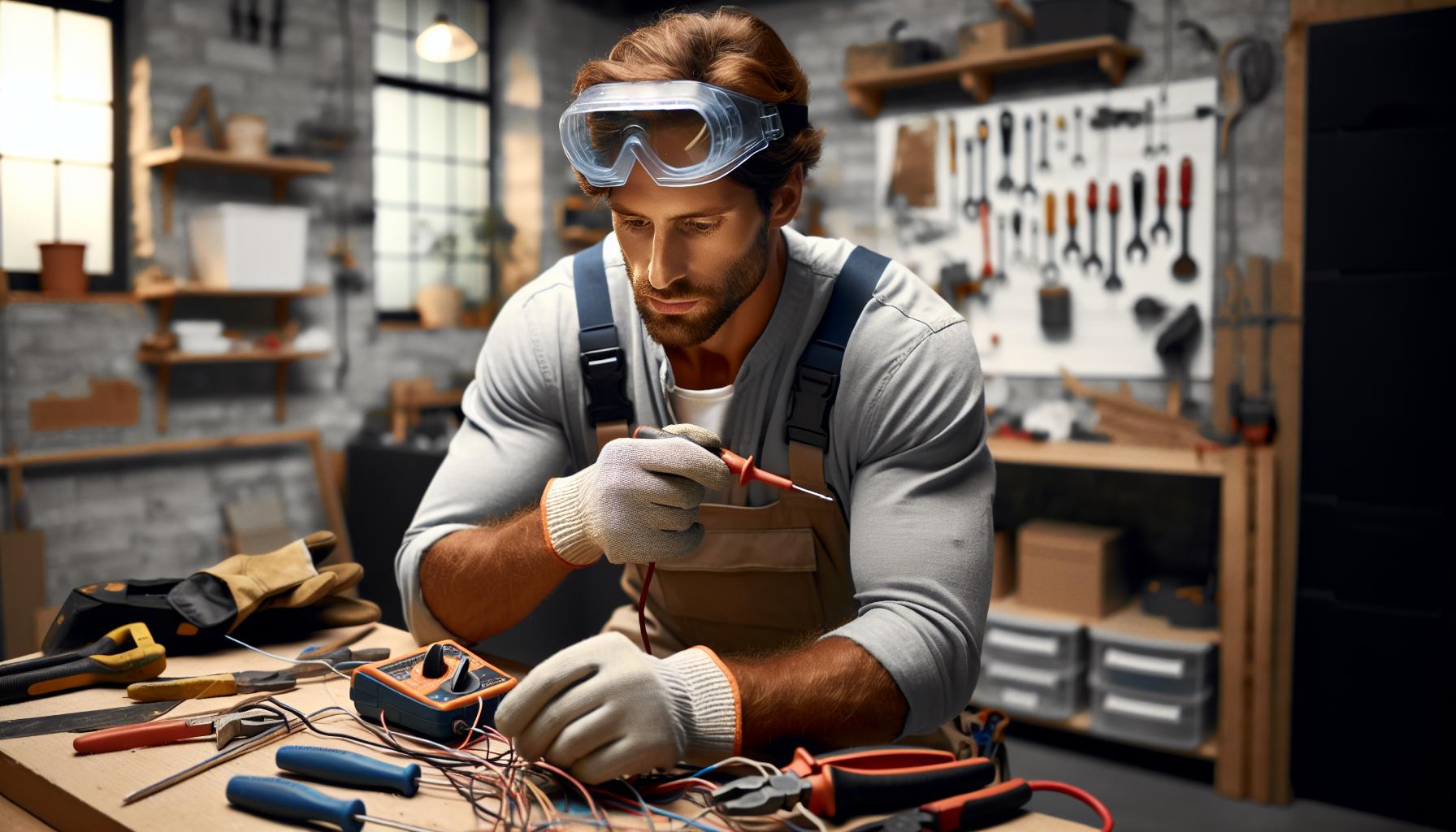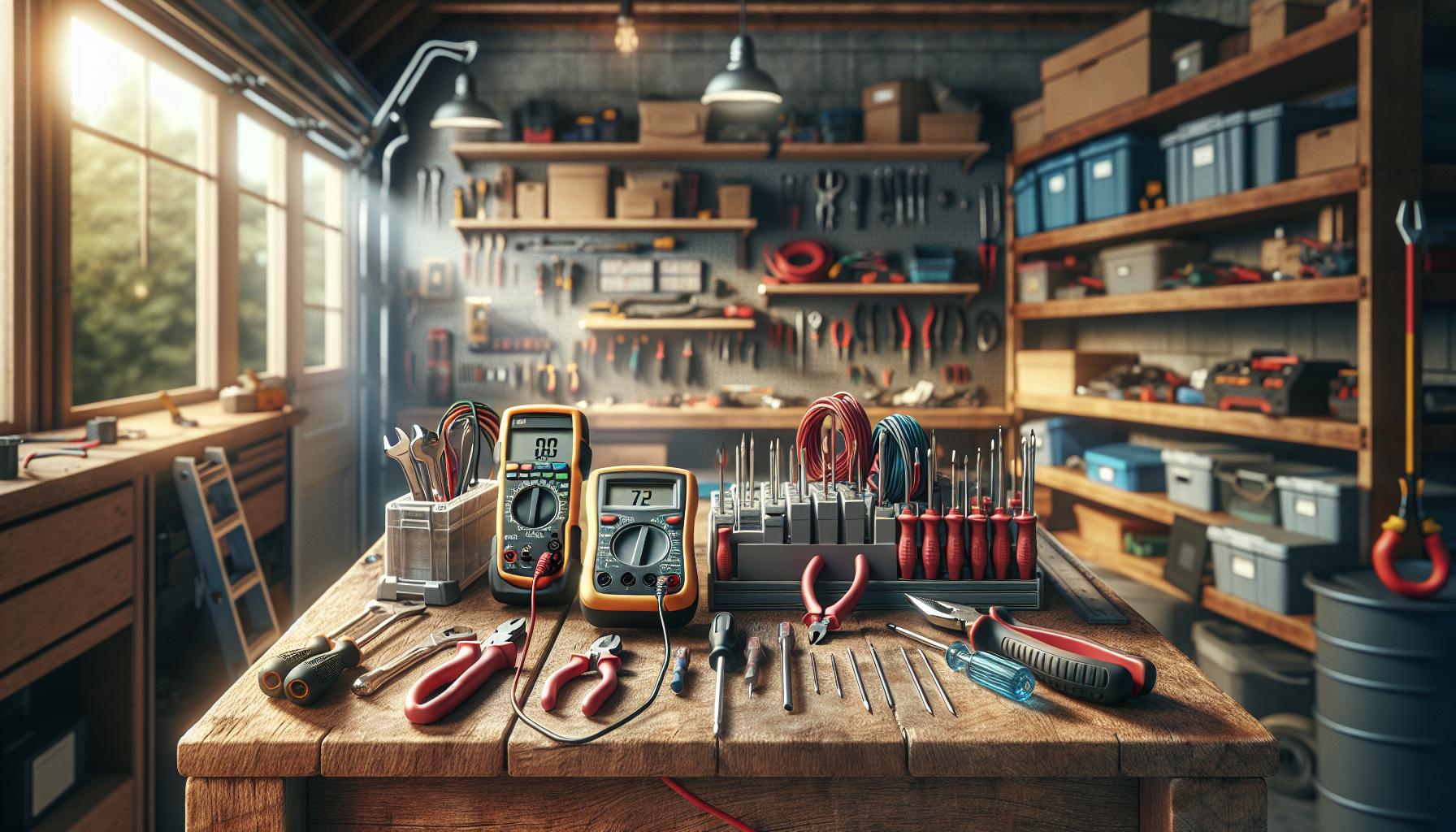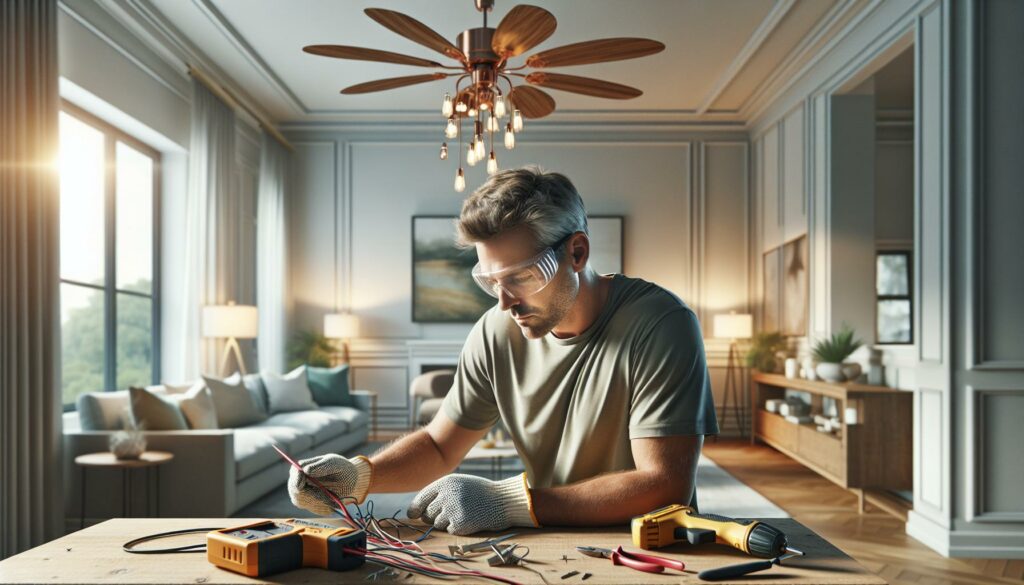When it comes to home improvement, DIY electrical projects can be both rewarding and practical. I’ve always found that tackling these tasks not only enhances my living space but also boosts my confidence in handling electrical systems. Whether you want to install a new light fixture or upgrade your outlets, the satisfaction of completing a project yourself is unmatched.
In this guide, I’ll share some exciting DIY electrical projects that anyone can try. With a little guidance and the right tools, you’ll discover how easy it is to transform your home while saving money on professional services. Let’s dive into the world of DIY electrical work and unlock the potential to create a more functional and stylish living environment.
Key Takeaways
- Empower Your Skills: DIY electrical projects not only enhance your living space but also boost your confidence and understanding of electrical systems.
- Cost Savings: Completing simple electrical tasks yourself can save significant labor costs, which typically range from $50 to $150 per hour for professionals.
- Essential Safety Precautions: Always prioritize safety by wearing protective gear, turning off power at the circuit breaker, and following local electrical codes.
- Necessary Tools: Equip yourself with essential tools such as multimeters, wire strippers, and voltage testers to ensure efficient and safe project execution.
- Beginner-Friendly Projects: Start with simple projects like installing light fixtures and upgrading outlets to build your skills and confidence in DIY electrical work.
- Advanced Opportunities: Explore advanced projects like solar panel installation and smart home integrations to significantly enhance home efficiency and energy savings.
DIY Electrical Projects
DIY electrical projects offer practical solutions for home enhancement while improving my skills and confidence. Whether I want to upgrade lighting fixtures, install ceiling fans, or even tackle outdoor lighting, there are numerous accessible projects available. These projects not only elevate the aesthetic of my living space but also ensure that I understand the fundamentals of electrical systems.
Engaging in DIY electrical work helps me save on labor costs. Professional electricians often charge between $50 and $150 per hour, depending on the complexity of the job. By completing simple tasks myself, I can focus on budget management while still achieving desired results.
Certain tools are essential for these projects, including multimeters, wire strippers, and safety goggles. Proper safety measures and awareness of local electrical codes remain crucial. Ensuring compliance with guidelines promotes safety and functionality.
Examples of common DIY electrical projects include:
- Installing Dimmer Switches: Adjusting light intensity enhances mood and ambiance.
- Wiring New Outlets: Adding outlets in strategic locations improves electrical access.
- Replacing Light Fixtures: Updating fixtures transforms the room’s style.
- Creating Outdoor Lighting: Setting up outdoor lights enhances safety and aesthetics.
Taking on DIY electrical projects empowers me with knowledge and capabilities that extend beyond mere tasks. Each project completed adds value to my home while shifting my perception of what I can achieve.
Basic Safety Precautions

Safety remains a top priority in any DIY electrical project. By following essential safety precautions, I can ensure a secure and effective working environment.
Personal Safety Gear
Wearing appropriate personal safety gear protects against electrical hazards. Key items include:
- Safety goggles: They shield eyes from sparks and debris during projects.
- Insulated gloves: Use insulated gloves to prevent electrical shocks when handling wires.
- Hard hats: For overhead protection in areas where falling objects may occur.
- Steel-toed boots: Footwear that protects against heavy equipment and sharp materials.
- Ear protection: To minimize hearing damage when using power tools.
- Turn off power: Always cut power at the circuit breaker before commencing work on any electrical system.
- Use a voltage tester: Verify the power is off with a voltage tester before touching any wires.
- Follow local codes: Consult and abide by local electrical codes and regulations to ensure compliance and safety.
- Avoid overloaded circuits: Minimize the use of multiple high-wattage devices on the same circuit to prevent overheating.
- Work in dry conditions: Avoid electrical work in wet or damp areas to prevent shocks.
- Keep tools in good condition: Regularly check tools for damage and replace frayed or damaged cords immediately.
Essential Tools and Materials

Having the right tools and materials makes DIY electrical projects efficient and safer. Below are the essential tools and materials needed for successful electrical work.
Common Tools Required
- Multimeter: Measures voltage, current, and resistance, helping check circuit functionality.
- Wire Strippers: Removes insulation from wires, allowing for proper connections.
- Screwdrivers: Phillips and flathead screwdrivers facilitate the installation and removal of fixtures.
- Pliers: Needle-nose and standard pliers assist with gripping and bending wire.
- Voltage Tester: Checks if circuits are live, ensuring safety before starting work.
- Fish Tape: Used for routing wire through walls and conduits, making the process smoother.
- Drill: Essential for creating holes for fixtures or outlets, adding versatility to projects.
- Safety Goggles: Protects eyes from debris and potential hazards during installations.
- Electrical Wire: Various types, such as Romex or THHN, suit different applications and project requirements.
- Electrical Boxes: Holds connections and provides a safe enclosure for electrical wiring.
- Outlets and Switches: Standard outlets and various switch types, like dimmers, facilitate electrical control.
- Light Fixtures: Choose fixtures based on style and energy efficiency, fitting your design preferences.
- Wire Nuts: Used for securing wire connections, ensuring solid electrical contact.
- Electrical Tape: Provides insulation and protection for exposed wire connections.
- Circuit Breaker: Necessary for new circuits, helping protect against overloads and faults.
Beginner-Friendly DIY Electrical Projects

Engaging in DIY electrical projects can boost confidence and enhance my living space. Here are two beginner-friendly projects that can provide a great start.
Simple Lighting Installations
Installing new light fixtures transforms any room. I start by choosing energy-efficient LED fixtures, which save on electricity costs and last longer. Preparation involves the following steps:
- Turn Off Power: I always turn off the circuit breaker for safety.
- Remove Old Fixture: I unscrew the old fixture, detaching the wires carefully.
- Connect Wires: I match the new fixture’s wires—black to black (hot), white to white (neutral), and green or copper to the ground.
- Secure Fixture: I attach the new fixture to the ceiling and ensure it’s tight.
- Restore Power and Test: After restoring power, I test the fixture to ensure it operates correctly.
These simple steps lead to improved lighting and immediate aesthetic upgrades.
Basic Power Outlet Upgrades
Upgrading existing power outlets not only enhances functionality but also promotes personal safety. I focus on GFCI outlets, ideal for areas exposed to moisture, like kitchens and bathrooms. The process includes:
- Turn Off Power: I turn off the corresponding circuit breaker.
- Remove Old Outlet: I remove the cover plate and unscrew the old outlet.
- Wire New Outlet: I connect the new GFCI outlet according to the manufacturer’s instructions, ensuring correct wire attachments.
- Secure and Cover: I fasten the outlet into place and attach the cover plate.
- Test the Outlet: After restoring power, I test the new outlet using a voltage tester.
These straightforward upgrades provide safer electrical systems while boosting the functionality of my home.
Intermediate DIY Electrical Projects
Engaging in intermediate DIY electrical projects elevates one’s skills and enhances home functionality. Below are two popular projects that many homeowners can tackle.
Installing Ceiling Fans
Installing ceiling fans introduces energy efficiency and comfort to living spaces. To start, gather necessary tools such as a screwdriver, wire connectors, and a voltage tester. First, turn off power at the circuit breaker to ensure safety. Next, remove the existing light fixture if applicable. Mount the ceiling fan bracket securely to the electrical box, ensuring it can support the fan’s weight. Connect wires from the ceiling to the fan—black to black (hot), white to white (neutral), and green or bare wire to the ground. Secure all connections with wire connectors and tuck them neatly into the electrical box. Finally, attach the fan blades and light kit according to the manufacturer’s instructions. Once everything is in place, restore power at the breaker and enjoy the cool breeze.
Wiring for a Home Theatre System
Wiring for a home theatre system transforms any room into an entertainment hub. Begin by planning the layout to determine the optimal locations for components, including the TV, receiver, and speakers. Gather essential tools such as a drill, stud finder, and HDMI cables. First, mark where cables will run along walls and ceilings. Use a stud finder to avoid wiring through beams, ensuring safe installation. Drill holes in the wall and feed speaker wire through the openings to connect speakers in their respective locations. For the receiver, run HDMI and power cables neatly, ensuring minimal visibility. Securely attach all connections, and verify functionality by testing the system before finishing. Following these steps creates an impressive home theatre experience.
Advanced DIY Electrical Projects
Advanced DIY electrical projects expand my skills and knowledge while enhancing home efficiency. Below are two noteworthy projects that offer significant benefits.
Solar Panel Installation
Installing solar panels transforms energy consumption and reduces electricity bills. I’ll begin by assessing the roof’s position and angle for optimal sunlight exposure. Next, I’ll gather necessary materials, including solar panels, inverters, and mounting hardware.
- Measure and Plan: Determine the total wattage needed and the number of panels required.
- Secure Permits: Check local regulations for permits and inspections.
- Install Mounting Brackets: Install brackets securely to the roof, ensuring they can support the panel’s weight.
- Connect Wiring: Connect the panels to the inverter and ensure proper grounding to maintain safety.
- Test the System: After installation, test the system by checking for power output and confirming connections.
Adhering to safety standards and local codes is essential throughout the process.
Smart Home Integrations
Smart home integrations simplify daily tasks and improve energy efficiency. I’ll focus on installing devices like smart thermostats and lighting systems.
- Choose Devices: Select compatible smart devices based on my home’s setup.
- Install Smart Thermostat: Remove the existing thermostat, connect the wires to the new smart device, and follow manufacturer instructions.
- Set Up Smart Lighting: Replace standard bulbs with smart LED bulbs, ensuring to follow wiring instructions properly for safe connections.
- Connect to Wi-Fi: Connect devices to the home network using the corresponding app for easy control.
- Automate and Program: Create schedules and automation for energy savings and convenience.
Focusing on compatibility and security maintains a functional and safe smart home environment.
Embracing DIY electrical projects has transformed my approach to home improvement. I’ve found that tackling these tasks not only enhances my living space but also boosts my confidence in handling electrical systems. With the right tools and knowledge, anyone can dive into projects that elevate both functionality and style.
Safety remains a top priority for me, and I always ensure I follow best practices. Each project I complete empowers me with new skills and insights into my home’s electrical framework. Whether you’re a beginner or looking to take on more advanced tasks, the possibilities are endless. So why not get started on your own DIY electrical journey today?

